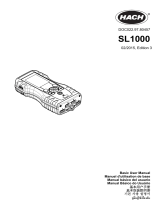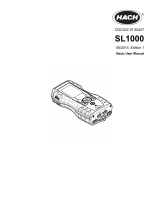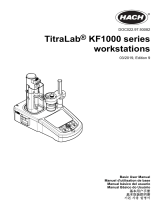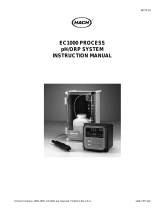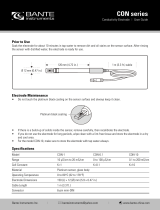
Message or symptom Possible cause Action
Drifting/Inaccurate
readings
Contaminated platinum disc Clean the probe (refer to Clean the probe
on page 10).
Clogged reference Thoroughly rinse the reference junction holes with
deionized water. Gently tap the probe with hand
while holding the probe downward to remove any air
bubbles.
Improper storage conditions The probe may not function correctly if the probe has
been left dry for extended periods of time.
1. Clean or condition the probe and attempt to
recalibrate the probe.
2. If recalibration fails, attempt to recondition the
reference junctions by putting the probe tip in a
3.0 M KCl storage solution for 1-2 hours.
3. Rinse the probe with deionized water before use.
Electromagnetic Forces (EMF) such as
voltaic cells, thermoelectric devices,
electrical generators, resistors and
transformers.
Do not test in areas where EMF is present. For
testing in process units (i.e. spot checking), make
sure that the equipment is grounded.
Air bubbles around inner reference
electrode
Gently tap the probe with hand or shake the probe
while holding the probe downward in the
solution/sample to remove any air bubbles in the
reference junction holes.
Out of limits Check standard value is outside of limits
set in the current method
Make sure that the standard is within the limits of the
current method.
Create a new method that expands the acceptable
limits.
Measurement value is outside of
measurement limits set in the current
method.
Make sure that the sample is within the limits of the
current method.
Create a new method with an expanded range.
Calibration adjustment offset value
outside the limits set in the current
method
Make sure that the standard is within the limits of the
current method.
Create a new method that expands the acceptable
limits.
Storage cap not removed Remove the storage cap.
Temperature out of range Calibration temperature value is outside
of range
Make sure that the sample temperature is within the
range of the probe.
Make sure that the temperature sensor is working
correctly.
Measured temperature is outside range
of the probe
Make sure that the standard temperature is within the
range of the probe.
Make sure that the temperature sensor is working
correctly.
Check standard temperature value is
outside of range
Make sure that the Check Standard temperature is
within the range of the probe.
14

















